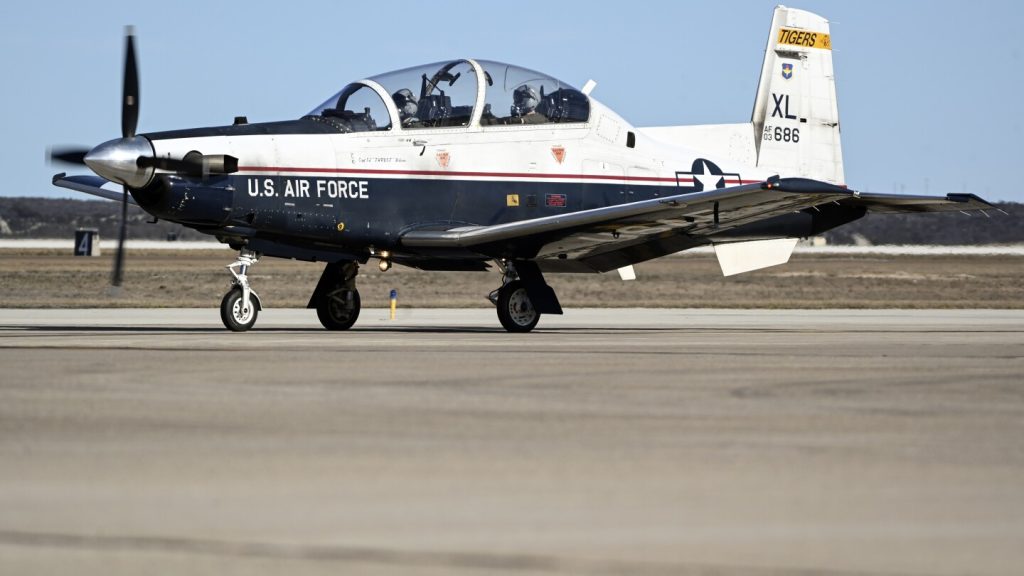The Air Force instructor pilot was tragically killed when the ejection seat of a T-6A Texan II aircraft activated while the jet was still on the ground at Sheppard Air Force Base in Texas. The pilot was taken to the hospital but succumbed to injuries the following day. The T-6A Texan II is a primary trainer aircraft for Air Force, Navy, and Marine Corps pilots, equipped with Martin-Baker ejection seats that are activated by a handle. In 2022, the T-6 fleet, along with other military jets, underwent inspections due to a potential defect with the ejection seat’s cartridge actuated devices (CADs), resulting in some replacements being made.
Ejection seats are designed to save pilots’ lives in emergency situations by quickly propelling them out of the aircraft. However, there have been instances where ejection seats have failed, contributing to aircraft accidents. In a tragic incident in June 2020, 1st Lt. David Schmitz lost his life in an F-16 crash where ejection seat failure was identified as a partial cause. On the other hand, in a remarkable display of bravery, a B-1 bomber crew in 2018 chose to remain in their burning aircraft despite one ejection seat indicating failure. Their decision to stay and land the aircraft together ultimately saved all of their lives, earning them the Distinguished Flying Cross.
The activation of an ejection seat involves an explosive cartridge that initiates the ejection sequence, propelling the pilot out of the aircraft. While this mechanism is crucial for pilots’ safety, malfunctions can have devastating consequences, as seen in the recent incident at Sheppard Air Force Base. Investigation into the ejection seat activation on the grounded T-6A Texan II is ongoing, with the pilot’s name being withheld until next of kin are notified. The loss of an instructor pilot serves as a somber reminder of the risks faced by those who serve in military aviation.
Efforts to ensure the safety and reliability of ejection seats continue to be a priority for the military branches that utilize them, including the Air Force, Navy, and Marine Corps. The grounding and subsequent inspection of the T-6 fleet in 2022 highlight the commitment to identifying and addressing potential issues with ejection seat components. As technology advances, improvements in ejection seat design and functionality aim to further enhance pilot survivability in emergency situations. The incident at Sheppard Air Force Base underscores the importance of ongoing vigilance and maintenance to prevent ejection seat malfunctions and protect the lives of military pilots.
The risks and challenges faced by military pilots in training and combat operations are significant, with ejection seats serving as a critical safety feature in emergency scenarios. While ejection seats have saved many lives over the years, they are not without their own dangers and limitations. Training programs and safety protocols aim to prepare pilots for the use of ejection seats and emphasize the importance of proper procedures in emergency situations. The tragic loss of the instructor pilot at Sheppard Air Force Base serves as a poignant reminder of the sacrifices made by those who dedicate their lives to military aviation and the need for continued efforts to enhance safety measures in the field.


